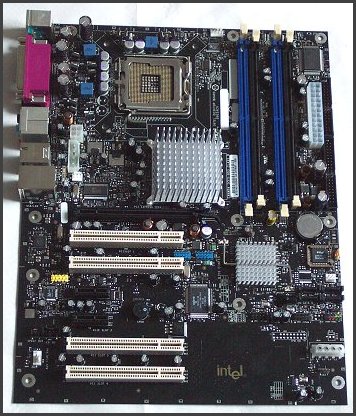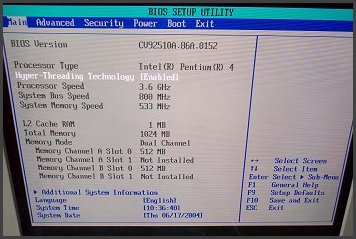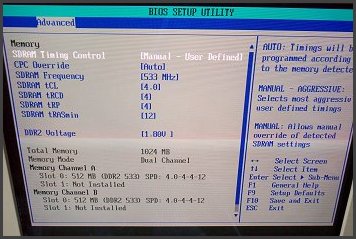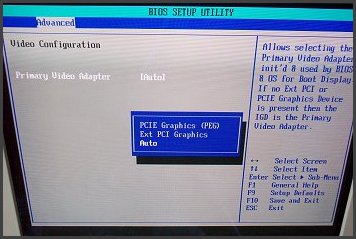Intel's D925XCV Mainboard
Intel's D925XCV is their flagship Alderwood desktop motherboard. Equipped with everything the new platform has to offer, inluding HDA, the LGA775 socket, DDR-II memory slots, PCI Express for graphics and peripherals, Gigabit Ethernet networking, FireWire 400, optical audio output and lots of USB2.0, the XCV sits at the top of Intel's own motherboard pile.I won't dwell too heavily on the features, but I'll discuss the layout a little, since it's representative of the kind of layouts you'll come across in Alderwood and Grantsdale boards from partners.
There are a number of key features to discuss on the top half of the board. The LGA775 socket sits in the top left, rotated 90° anti-clockwise. The socket area is clear, as defined by Intel, so that the heatsink can fit properly. The CPU requires an ATX12V feed from your PSU and that socket is sited on the left near the speaker ports. You'll notice an extra Molex power connector right underneath it. That's incase you don't have an EPS 24-pin power supply. You use a regular ATX power supply, plugging it into the EPS power connector (it can only go in at one position) and supplement it with that Molex connector next to ATX12V.
The main i925X bridge is passively cooled by a large multi-finned heatsink with the quartet of DIMM slots taking up residence in the top right of the board. The EPS 24-pin power connector sits past the DIMM slots. The EPS connector has a further 4 pins over an ATX power connector.
The PCI Express slot marks the north-south split, as the AGP slot would on any other current motherboard. Two pairs of PCI slots flank a pair of PCI Express 1x slots, with the Marvell Ethernet controller, Agere firewire controller either side of those.
The PCI Express 1x implementation from the ICH6 maps to a regular PCI bus, so non PCI Express-aware operating systems can utilise any peripherals connected that way.
You'll notice the southbridge has a heatsink applied, not that it got anywhere near warm during testing. Four SATA ports for the Matrix Storage implementation, driven by the ICH6, lie on the right hand board edge in a 2x2 cluster, the best place for them, given current SATA cable lengths.
The final board curiosity is the female Molex connector on the bottom right of the board. It's for powering a case fan or case lighting, but nothing more since the current draw supported by the connector is low. No hard disk running from that port, only cold cathodes and the like.














